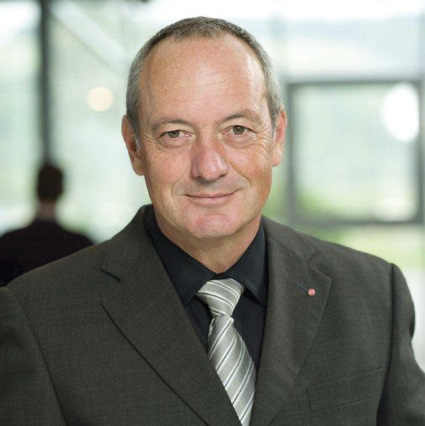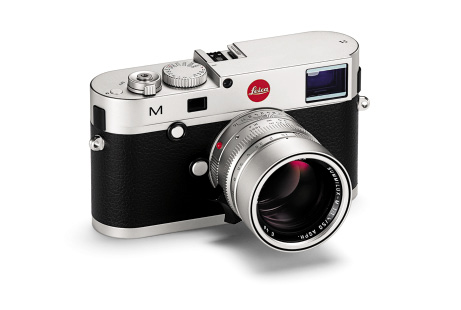- Home
- Media Kit
- Current Issue
- Past Issues
- Ad Specs-Submission
- Ad Print Settings
- Reprints (PDF)
- Photo Specifications (PDF)
- Contact Us

![]()
ONLINE


Alfred Schopf
Leica’s Leadership
Editors’ Note
Alfred Schopf has held his current post since August 2010. From November 2009 until August 2010, he was a member of the Supervisory Board of Leica Camera AG. Before this, Schopf held different managing positions in companies in the optical and opto-electrical industry. Between 2004 and September 2010, Schopf was Managing Partner of K+H Armaturen GmbH. Since 2004, he has also been a member of the Advisory Board of EOMAX Corporation, Toronto, Canada. From 2001 until 2004, Schopf, as Head of Management and CEO respectively, directed the business of ARRI, Munich. Prior to this, he was responsible for the Optics, Microoptics, Optoelectronic Systems, Laser Technologies, and Image Processing divisions at Jenoptik AG.
Company Brief
With headquarters in Solms, Germany and a second location in Portugal, Leica Camera AG (www.corporate.leica-camera.com) is captionan international company in the optical industry. All products from the three divisions – Photography, Hunting Lenses, and Nature Watching – have a shared mission: to deliver better images.
Would you talk about the Leica heritage and how the brand has evolved over time?
Leica has always been famous for capturing excellent pictures, so we looked at the whole industry more from a result angle rather than from a technology standpoint.
Whatever we do, we try to give our customers the opportunity to create a better image or to express themselves the way they want to and, therefore, we regard Leica as a tool. There were times when it was tough for us to understand how to progress, especially when things changed from analog to digital – we didn’t see how we could manage our values in the digital arena. However, once we discovered how to do it, we decided to enter into it.
On the other side, if you’re looking to our product, we have a huge sensor in a relatively compact body.
This is also one of the traditional values that comes out of the history of analog film because a bigger sensor always means you get better image quality and you have some head room for things you want to do in special terms.

The Leica M
Would you touch on a few of the innovations that Leica is planning to bring to market?
The latest product, which will be available in early January, is the new M. It has a specially designed and developed CMOS sensor that, in terms of quality, offers a much better result than an average sensor in the full format range.
So far, the images we’ve seen out of this sensor are beyond remarkable. This is where we put the design guys from an electronic developer together with our guys so they know what can be done in a semiconductor. This results in a camera whose pixel-design is significantly different from what our competitors offer which, in turn, allows better sensor image quality.
The pixel itself is more like a mushroom design while the regular ones have a lens design, so you can get light only from the front. But with our so-called mushroom design, we can get light from everywhere, not from a direct angle but from the side. This leads to much better results in terms of ISO capabilities and available light photography, so the end user can get a lot of the results out of that.
Is there an effective understanding of Leica’s quality and tradition?
Leica is known for handcrafting and we continue this tradition, but we must also tell our story to the community, not just our customers. For example, we measure the lenses 40 times and individually change them to get better results.

The Leica X2 Paul Smith
How broad is your customer base?
Initially, everybody told me that Leica users are typically older and have been following the brand for a long time. In 2012, we did a book called Ninety Nine Years Leica and we asked people to compose a self-portrait through Flickr. We got more than 500 self-portraits and there was barely anyone over 40 years of age; the variety of our customers was a surprise. The M8 and M9 are already favorites with younger people – many just want to shoot with Leica.
Leica has a number of customers who understand the essentials of photography and, if they can afford it, they will purchase a Leica – it’s not a question of a customer’s age.
The result was so successful that we are planning a second book, Leica. My Life, and we will put in the portraits and comments of these people who initially submitted via Flickr.
What is the reasoning behind the planned move to new headquarters?
We have grown significantly over the past two years from roughly $158 million to nearly $300 million, so we nearly doubled the revenues. But we are still in an old manufacturing facility, which is now more than overdue for an overhaul in order to accommodate for the right technical conditions.
We’re planning to move into our new headquarters by October 2013 – we’ll double the space so we’ll almost double the capacity, and we’re doing the same thing in Portugal.
Is technology impacting the way you’re designing or producing?
The film was replaced by a sensor, but it’s not only the film; it is also the chemistry process behind it because you have to put the whole laboratory inside the electronics of such a camera.
It’s a major change and we are looking into it. There are also a lot of new chip designs, so in order to get better results, we need to match the sensor to the camera and the camera with the lenses. Another issue is communication-wise, a lot of compact cameras can transfer the image to a social network – this capability is being driven from the market side.
How have you been able to consistently lead in the after-sales customer service area?
We have improved the times our customers have to wait for us to repair one of our products. We also want to bring more of the repair capability to different countries. Right now, we have a three-tier repair structure: issues a dealer can handle, issues that must be handled by our countrywide subsidiary, and issues that can only be handled in Germany – especially when we launch a new product. We like to do everything in Germany to determine any possible inconsistencies in the newly launched product. Then we can roll it out to our subsidiaries in order to do the repairs in a short time frame.
One benefit now is that all the lenses an owner has can still be incorporated into the latest camera.•